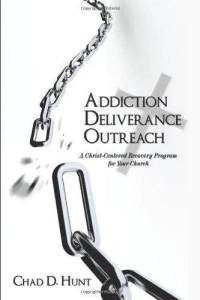Addiction Deliverance Outreach...how it started
Nearly twelve years ago, I was burdened to do something for the drug problem in my community. Within a few months, I wrote a four step program called Addiction Deliverance Outreach, or better known as ADO. A lot of people ask me, “Why only four steps?” Well, I had never been to an AA meeting, so I had no idea there were supposed to be twelve steps. In a very short time, ADO became an icon of hope in our community. We seen hundreds of people go through it and recover. Other pastors began to send us people from their church who were struggling with addiction and soon, we had more than we could handle. So I began to write down what I was doing and handing it out to pastors, so they could help their own people. At the end of the day, and over about four years, I accidentally wrote a book and a workbook.
Today our church has three recovery homes; we serve men and women off the streets and straight out of prison. Other churches have jumped on board as well. The ADO is now used in churches of every denomination and size all around the country.
The ADO is unique in that it can be used exclusively or alongside AA, Celebrate Recovery, or other recovery programs. There are two things that make ADO unique; it is based on a one on one relationship and it empowers lay people (regardless of whether or not they’ve had a history of drug abuse) to help those who struggle with addiction. Here’s a snapshot of how it works.
- Lay people are provided with a counselor’s book. In the book, I teach the steps of becoming a mentor or counselor. The mentor takes the client through four steps; each step has a number of sessions. The client reads a "session prep" chapter and then reviews the session. The mentor and the client meet for one hour per week. The book equips the mentor with relevant conversations, Bible verses, and counsel that points the client towards recovery and Christ. In the midst of mentoring, a relationship is formed. It's one on one; it's life on life. In other words...it’s discipleship at it’s best.
- The client has a workbook. It also has four steps with the same number of sessions as the counselor’s book. The workbook challenges the client to take a hard look at addiction and the damage it's caused. Yet, it also introduces the client to God's word; the client learns about the hope and love of God. They learn God never created drug addicts, therefore, no one has to buy into the "once an addict, always an addict" mentality. The workbook collaborates with the book, creating a simple, yet healthy and effective platform for discipleship and life change.




Comments
Post a Comment